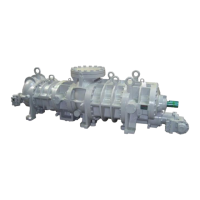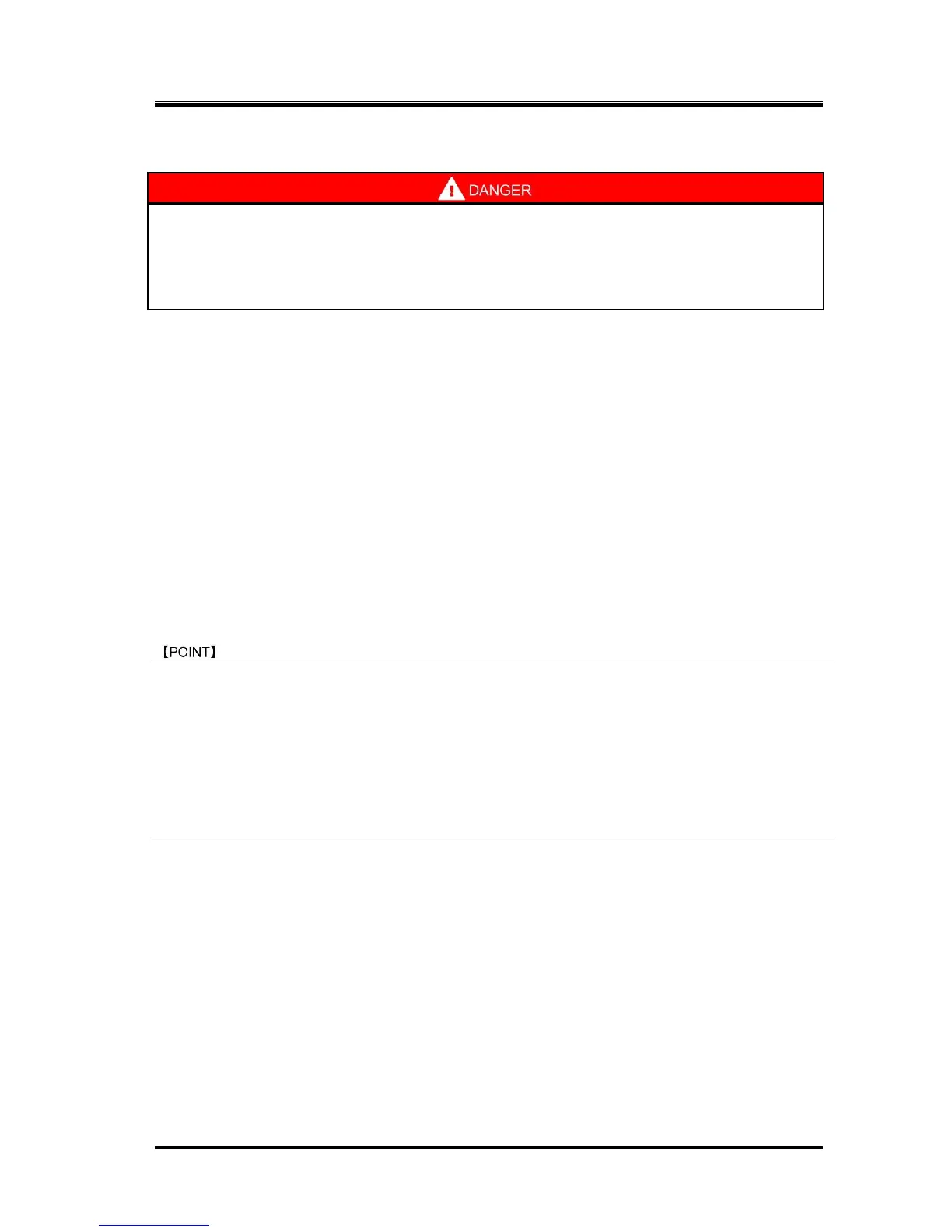2202MYJE-MY-C8-N_2018.02.
Chapter 5 Maintenance and Inspection
Compound 2-stage Screw Compressor 3225**C 5.3 Compressor Disassembly Preparation
5-12
5.3.4 Removal of Connections to the Unit
If high-pressure refrigerant gas or refrigerant-mixed lubricating oil remains inside the
compressor, refrigerant gas may blow off when the closed circuit is opened. This
may result in injury such as frostbite or loss of vision.
Be sure to confirm that there is no residual pressure before opening any pipe
connections.
When removing the compressor from the mounting base frame, the following parts must be
disconnected beforehand:
(1) Coupling to connect the compressor to the driving machine;
(2) Suction and discharge pipes of the compressor.
If the suction strainer is directly connected to the compressor, also remove the strainer;
(3) Oil supply lines to the compressor (Two journal oil inlet ports, one oil injection inlet port, and two
ports for each of the capacity increase and decrease controls);
(4) Electric wiring for capacity control operation (In some cases, the unloader indicator assembly may
be removed with the wiring left as it is. Refer to Section 5.4.1.1 in this chapter.);
(5) Compressor mounting bolts (foot bolts); and
(6) Intermediate connecting piping from the low-stage discharge port to high-stage suction port of the
compressor (In some cases, this piping is not removed, and the compressor is removed with this
piping attached.)
When removing oil lines from the compressor, there is possibility of gas and oil blowing out caused by
residual pressure. And any residual oil in the pipe will flow out. To be prepared for this, either check the
amount of oil outflow by slightly loosening the pipe joint or drain the oil from the oil temperature gauge at
the supply header before removing the pipe.
Work carefully in particular when disassembling the unloader cylinder block since there is residual
pressure and oil fills in the unloader cylinder. Moreover, prepare a larger volume container than the
unloader cylinder volume to receive oil flowing out.
For easy reconnection, disconnected electric wires should be properly marked for identification. Any
wrong reconnection may result in a startup failure or inability to operate the capacity control mechanism.

